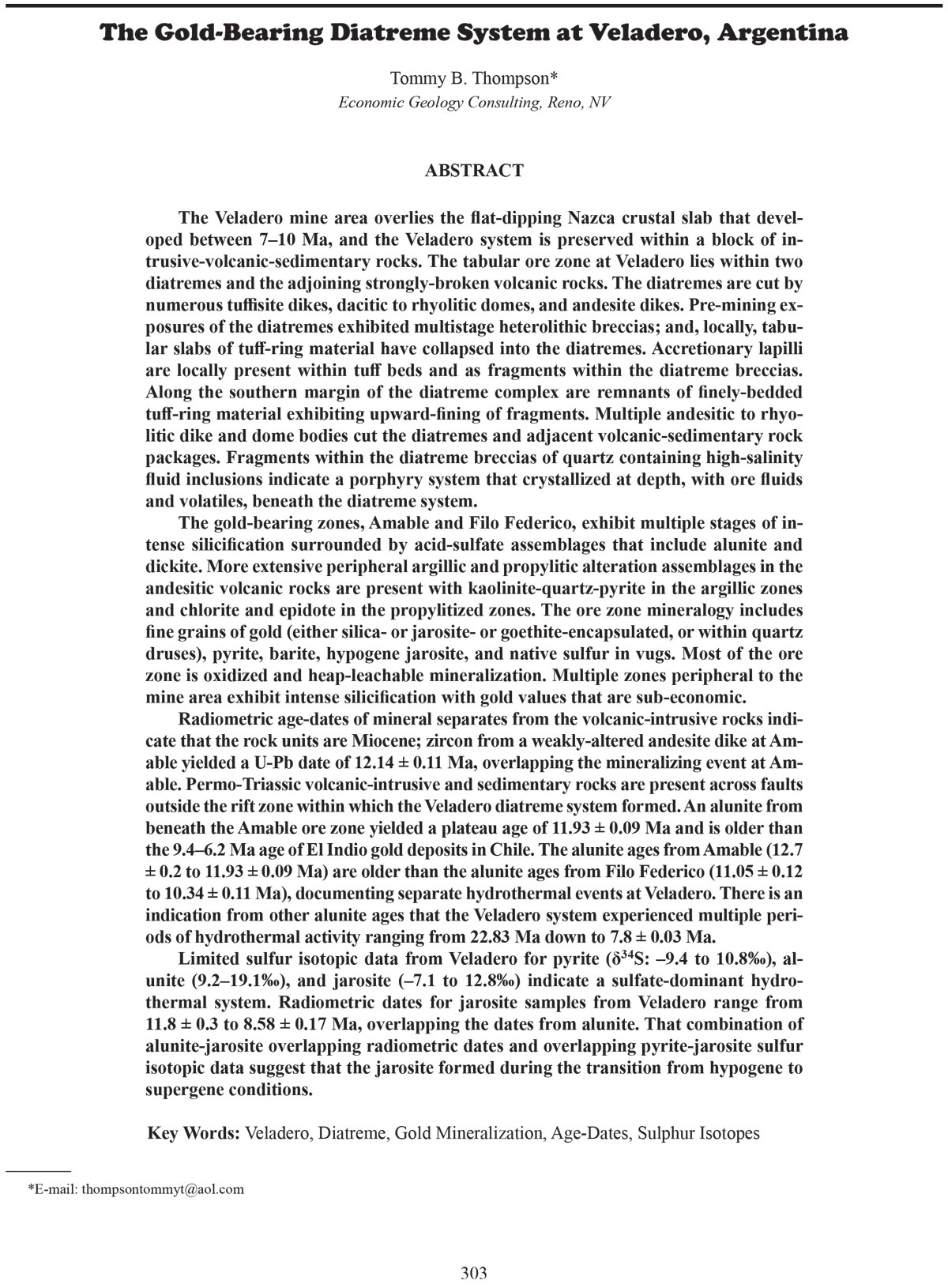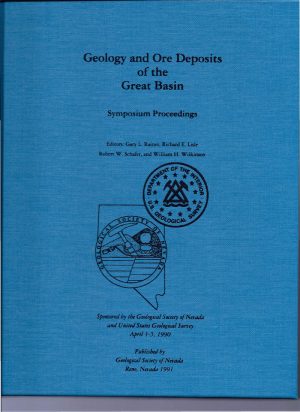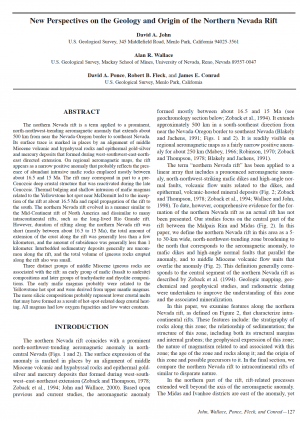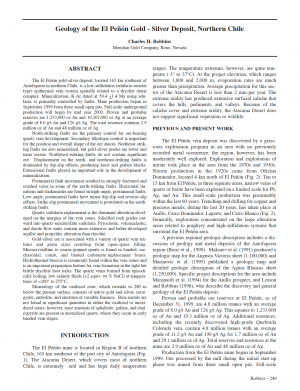Description
The Veladero mine area overlies the flat-dipping Nazca crustal slab that developed between 7–10 Ma, and the Veladero system is preserved within a block of intrusive-volcanic-sedimentary rocks. The tabular ore zone at Veladero lies within two
diatremes and the adjoining strongly-broken volcanic rocks. The diatremes are cut by
numerous tuffisite dikes, dacitic to rhyolitic domes, and andesite dikes. Pre-mining exposures of the diatremes exhibited multistage heterolithic breccias; and, locally, tabular slabs of tuff-ring material have collapsed into the diatremes. Accretionary lapilli
are locally present within tuff beds and as fragments within the diatreme breccias.
Along the southern margin of the diatreme complex are remnants of finely-bedded
tuff-ring material exhibiting upward-fining of fragments. Multiple andesitic to rhyolitic dike and dome bodies cut the diatremes and adjacent volcanic-sedimentary rock
packages. Fragments within the diatreme breccias of quartz containing high-salinity
fluid inclusions indicate a porphyry system that crystallized at depth, with ore fluids
and volatiles, beneath the diatreme system.
The gold-bearing zones, Amable and Filo Federico, exhibit multiple stages of intense silicification surrounded by acid-sulfate assemblages that include alunite and
dickite. More extensive peripheral argillic and propylitic alteration assemblages in the
andesitic volcanic rocks are present with kaolinite-quartz-pyrite in the argillic zones
and chlorite and epidote in the propylitized zones. The ore zone mineralogy includes
fine grains of gold (either silica- or jarosite- or goethite-encapsulated, or within quartz
druses), pyrite, barite, hypogene jarosite, and native sulfur in vugs. Most of the ore
zone is oxidized and heap-leachable mineralization. Multiple zones peripheral to the
mine area exhibit intense silicification with gold values that are sub-economic.
Radiometric age-dates of mineral separates from the volcanic-intrusive rocks indicate that the rock units are Miocene; zircon from a weakly-altered andesite dike at Amable yielded a U-Pb date of 12.14 ± 0.11 Ma, overlapping the mineralizing event at Amable. Permo-Triassic volcanic-intrusive and sedimentary rocks are present across faults
outside the rift zone within which the Veladero diatreme system formed. An alunite from
beneath the Amable ore zone yielded a plateau age of 11.93 ± 0.09 Ma and is older than
the 9.4–6.2 Ma age of El Indio gold deposits in Chile. The alunite ages from Amable (12.7
± 0.2 to 11.93 ± 0.09 Ma) are older than the alunite ages from Filo Federico (11.05 ± 0.12
to 10.34 ± 0.11 Ma), documenting separate hydrothermal events at Veladero. There is an
indication from other alunite ages that the Veladero system experienced multiple periods of hydrothermal activity ranging from 22.83 Ma down to 7.8 ± 0.03 Ma.
Limited sulfur isotopic data from Veladero for pyrite (δ34S: –9.4 to 10.8‰), alunite (9.2–19.1‰), and jarosite (–7.1 to 12.8‰) indicate a sulfate-dominant hydrothermal system. Radiometric dates for jarosite samples from Veladero range from
11.8 ± 0.3 to 8.58 ± 0.17 Ma, overlapping the dates from alunite. That combination of
alunite-jarosite overlapping radiometric dates and overlapping pyrite-jarosite sulfur
isotopic data suggest that the jarosite formed during the transition from hypogene to
supergene conditions.





